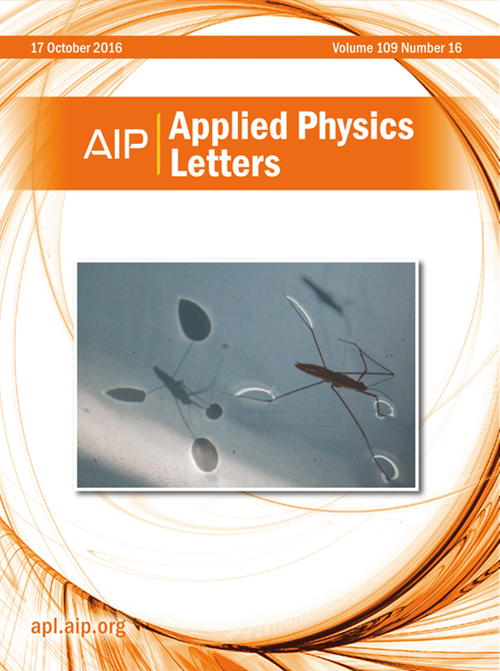Tunnel-magnetoresistance sensors with sub-pT detectivity for detecting bio-magnetic fields
IF 3.5
2区 物理与天体物理
Q2 PHYSICS, APPLIED
引用次数: 0
Abstract
Tunnel-magnetoresistance (TMR) sensors based on magnetic tunnel junctions are emerging spintronic devices that are promising for applications to wearable bio-magnetic-field monitoring systems. Targeting bio-magnetic fields from the human heart and brain requires TMR sensors with sub-pT detectivity at frequencies of 1–1000 Hz. In this article, technical strategies for achieving such detectivity from the viewpoints of thin-film materials and sensor configurations are reviewed. Recent demonstrations of magnetocardiography and magnetoencephalography using our TMR sensors are also reviewed, and potentially effective techniques to further optimize detectivity are proposed.用于探测生物磁场的亚铂探测隧道磁电阻传感器
基于磁隧道结的隧道磁阻(TMR)传感器是新兴的自旋电子器件,有望应用于可穿戴生物磁场监测系统。针对来自人体心脏和大脑的生物磁场,需要在 1-1000 Hz 频率下具有亚 pT 检测率的 TMR 传感器。本文将从薄膜材料和传感器配置的角度对实现这种检测率的技术策略进行综述。文章还回顾了最近使用我们的 TMR 传感器进行的磁心动图和脑磁图演示,并提出了进一步优化检测率的潜在有效技术。
本文章由计算机程序翻译,如有差异,请以英文原文为准。
求助全文
约1分钟内获得全文
求助全文
来源期刊

Applied Physics Letters
物理-物理:应用
CiteScore
6.40
自引率
10.00%
发文量
1821
审稿时长
1.6 months
期刊介绍:
Applied Physics Letters (APL) features concise, up-to-date reports on significant new findings in applied physics. Emphasizing rapid dissemination of key data and new physical insights, APL offers prompt publication of new experimental and theoretical papers reporting applications of physics phenomena to all branches of science, engineering, and modern technology.
In addition to regular articles, the journal also publishes invited Fast Track, Perspectives, and in-depth Editorials which report on cutting-edge areas in applied physics.
APL Perspectives are forward-looking invited letters which highlight recent developments or discoveries. Emphasis is placed on very recent developments, potentially disruptive technologies, open questions and possible solutions. They also include a mini-roadmap detailing where the community should direct efforts in order for the phenomena to be viable for application and the challenges associated with meeting that performance threshold. Perspectives are characterized by personal viewpoints and opinions of recognized experts in the field.
Fast Track articles are invited original research articles that report results that are particularly novel and important or provide a significant advancement in an emerging field. Because of the urgency and scientific importance of the work, the peer review process is accelerated. If, during the review process, it becomes apparent that the paper does not meet the Fast Track criterion, it is returned to a normal track.
 求助内容:
求助内容: 应助结果提醒方式:
应助结果提醒方式:


